Inspired by a bench
Grebbestad bench flair
Quite apart from plants, I was I was inspired by garden furniture and planters in Sweden and on our journey home through Denmark, Germany and France. First up:
Garden benches
Why be dull with a bench? What a great way to take a few wonky chairs and a couple of planks, and turn them into a feature. If you want to see it for yourself, it’s at the harbour in Grebbestad, on the west coast of Sweden. I really shouldn’t tell you about Grebbestad, because it’s so lovely. As a Scot I manage to overlook the fact that the ‘grave’ element of its name comes from a large Iron Age grave site outside the town, said by local legend to be the burial place of a raiding party of warriors from Scotland. This hasn’t been proved by archaeology, but why let science get in the way of the story?
That bench was left clear for sitting on, but elsewhere there was a theme of ‘populated benches’. Some of these were in private gardens, like this one at an Airbnb we stayed at.
In small Danish towns where the house frontage gave directly onto a pedestrianised street, the benches outside houses were occupied by plants. I imagine this might be to prevent passers-by settling in on your private seating and would be moved when the owners wanted to sit outside and watch the Danish passeggiato, but it certainly enhanced town centre pedestrian streets with a sense of shared responsibility for brightening the environment.
Very twiggy trees in pots either on or beside benches were also a theme, and suggest that at Christmas the streets would be gently twinkling with fairy lights.
Some garden furniture was definitely not for sitting on. This tastefully simple chair was beside the door of our German Airbnb in a granny flat at the side of the main house1.
Planted chair award has to go to this one on at a silversmith’s at Valla on the Swedish island of Tjörn.
The dual purpose bench/plant pot repository is definitely something I could use. Every year I long to have a ‘table of Spring’, and every year I realise it would be blown over. But a solid bench with a few pots on it, ideally in wicker planters like these, would definitely work in my location.
The benches also made me realise that we don’t have a variety of sheltered seating areas in the garden.Since taking over the garden I’ve viewed it only as a workplace.Somewhere to ‘make progress’ in, rather than somewhere that beckons you out to relax in a sunny or shady corner. Until now I’ve shrugged this off with the words ‘Scottish winter’.We have a very heavy bench that we lug out of a shed towards the end of April and lug back again in October.It gets plonked down in a west-facing spot beside the kitchen window. A bistro set of table and two chairs, legacy of our sheltered Edinburgh patio, are similarly heaved in and out, often multiple times in a summer because it blows over in any strong wind. But it all feels very temporary. Jo Thompson had a great post about designing social spaces in the garden at The Gardening Mind. I need to really study this and do some thinking and planning over the winter.
Other accessories
Whereas Britain has a tendency to accessorise gardens with wishing wells, gnomes and hanging signs telling people the glimpse of the b*****n obvious, as Basil Fawlty would put it, that they’re in a garden, Sweden goes for exquisite taste.
A garden in a teacup
Hen as accessory
Ladder attention to detail
I don’t have an accessory urge, but I did love these, including the hen. Until I was 5 we lived with my grandmother in a house with a large garden – and hens. The hen house was an old horse-drawn caravan. As I remember, the hens mainly accessorised the kitchen table, which was set against a window that was usually open in summer. I have a clear memory of the frequent shouts of “there’s a hen in the kitchen!” and being sent to shoo the hen back out into the garden.
Raised beds
The thin soil over rock in many places in Sweden means that use of raised beds is common. Often these are painted Swedish red.
Our friend Anette has created a wonderful garden from raised beds. Here’s one in June, with supports already in place.
June raised bed
August raised bed
Anything can serve as a raised bed:
While I don’t have a boat (although perhaps my husband’s kayak would make an interesting feature…), I do have an old metal wheelbarrow that’s no longer servicable. Instead of taking it to the council recycling centre, I’m going to extend its life by a few years by growing things in it. All suggestions welcome for plants suitable for a wheelbarrow.
The small raised beds have also made me rethink a large area that I was planning to de-turf completely and turn over to veg. Now I realise that I really need to give myself an easier time (not getting any younger and all that) by leaving most of it as grass and having a few raised beds. Much as I like the Swedish raised beds, I’m tempted to go for Corten steel. We’re on the edge of agricultural land, and a rusty iron look would blend well with some ‘features’ of the landscape.
Greenhouse use
Judging by those we saw, greenhouses in Sweden tend to be used as sheltered seating areas, or sitooteries2, as much as for propagating plants. Indeed, our Airbnb hosts in Trollhättan seemed to use theirs exclusively for a warm seating area. Note the net shading, which can be used to temper the heating effect of the glass.
Swedish sitooterie, Trollhättan
Anette’s greenhouse, currently with many tomatoes but still room to sit.
These presentable Swedish greenhouses made me feel very slovenly. I’m an extremely untidy greenhouse grower. Apart from a central flagged path the floor is of earth. By this time of year, with no plants growing on, it’s extremely dry and dusty, and this dust gets everywhere inside the greenhouse. The staging is made from 3 scaffolding boards screwed onto a metal frame. Underneath the staging I have what in Scots is called a ‘rickle’3. Opened bags of compost, grit, horticultural sand, buckets, many cobwebs and a persistant nettle that I keep hacking back to no avail. The whole thing is 47 years old. Replacing it isn’t in the budget at the moment – too many plants to buy – but I’m going to aspire to being a bit more Swedishly clean and tidy and I’ve resolved to lay flags (well, not me personally) on the earth floor.
Containers
I saw many gorgeous window boxes and containers which had obviously been carefully considered. My containers are the last thing I think about every year. I don’t really think about them, come to that. Living where I do, I’m limited for choice by what the local garden centre decides people want. This runs on a year in, year out list of violas, pansies, heathers, lobelia, pelargoniums, begonias, petunias and ivy. Somehow it seems too indulgent to send for different plants that are only going to do one season, especially if additional ‘remote area’ carriage charges are applied for living north of Watford. So I dash in to the garden centre, well after that magic signal to ‘buy annual plants’ that everyone else has obeyed, and stare glumly at the forlorn remains.
Taking photos of window boxes and pots outside front doors while we were travelling felt just a bit too intrusive, so I only have a couple to show you. On an evening of 32C heat we went for a walk round the neighbourhood of the German town we stayed in. The front gardens were tiny, opening directly onto the pavement, and every one was wonderfully different and beautifully planted. Here’s one that I did overcome my Scottish reserve to photograph. Black and white house, white shutter, white window box, white window frieze. Keep it simple.
Northern France was rather more on the blue lobelia and red pelargoniums wavelength, albeit very floriferous and obviously well watered and fed. It breaks my heart every year to see people here putting annuals in tiny pots and then not realising how much watering they need. These window boxes in Bergues broke away from the standard offering and again follow the keep it simple rule.
Incidentally, if you don’t know Bergues, it’s a real gem. It’s near Dunkirk, in the Nord-Pas-de-Calais, and was the location for the French comedy ‘Bienvenue chez les Ch’tis’.
All of this container beauty means that I need to do winter thinking about containers, and perhaps even order plants that I won’t be able to get locally. Jo Thompson’s post at The Gardening Mind about ‘The easiest garden containers ever’ is very much on the stylishly simple Swedish line, and I’ll be reading Scandinavian gardening websites to absorb as much as I can.
I didn’t expect to return from this trip with a kind of reverse holiday homework – the sort that you do after the holiday rather than during it. But it’s going to be a real pleasure, and part of the ongoing delight of gardening.
We aim never to stay in an Airbnb owned by a business, instead seeking out places that are part of the main house, or a cabin of some sort in the garden. Part of the pleasure is having conversations with the owners that are much more than just a handing over of keys, or being sent the code to the dreaded key box.
Scots word for an outside, sheltered seating area. It’s definitely not posh, in fact there’s an air of improvisation about most sitooteries. Jane at Snapdragon Life describes the essence of a sitooterie very well in this post.
'Rickle’ is a loose, carelessly thrown together pile of objects. Think teenager’s bedroom. Apparently from Old Norse ‘hraukr’, meaning a small pile of peats.





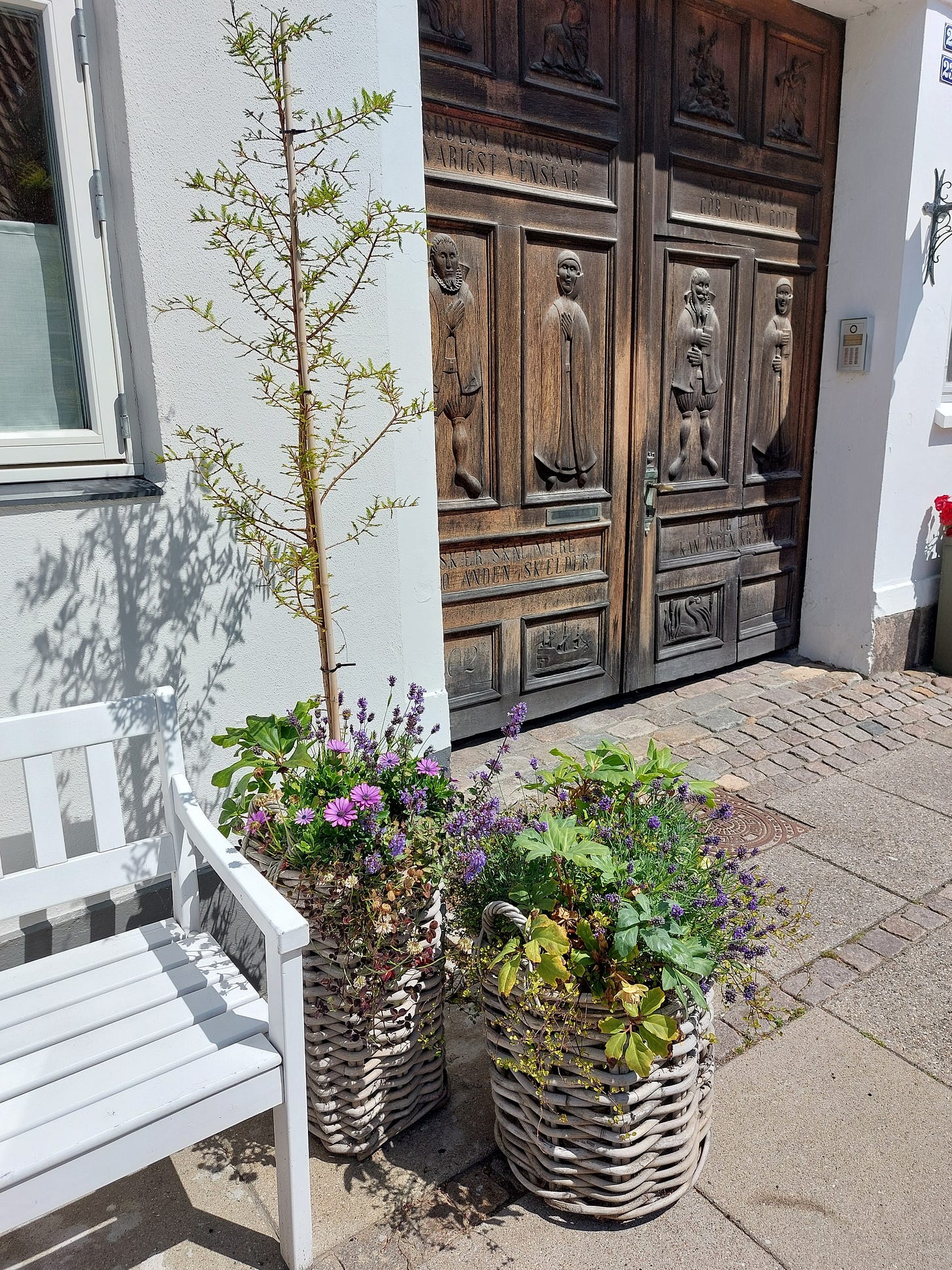
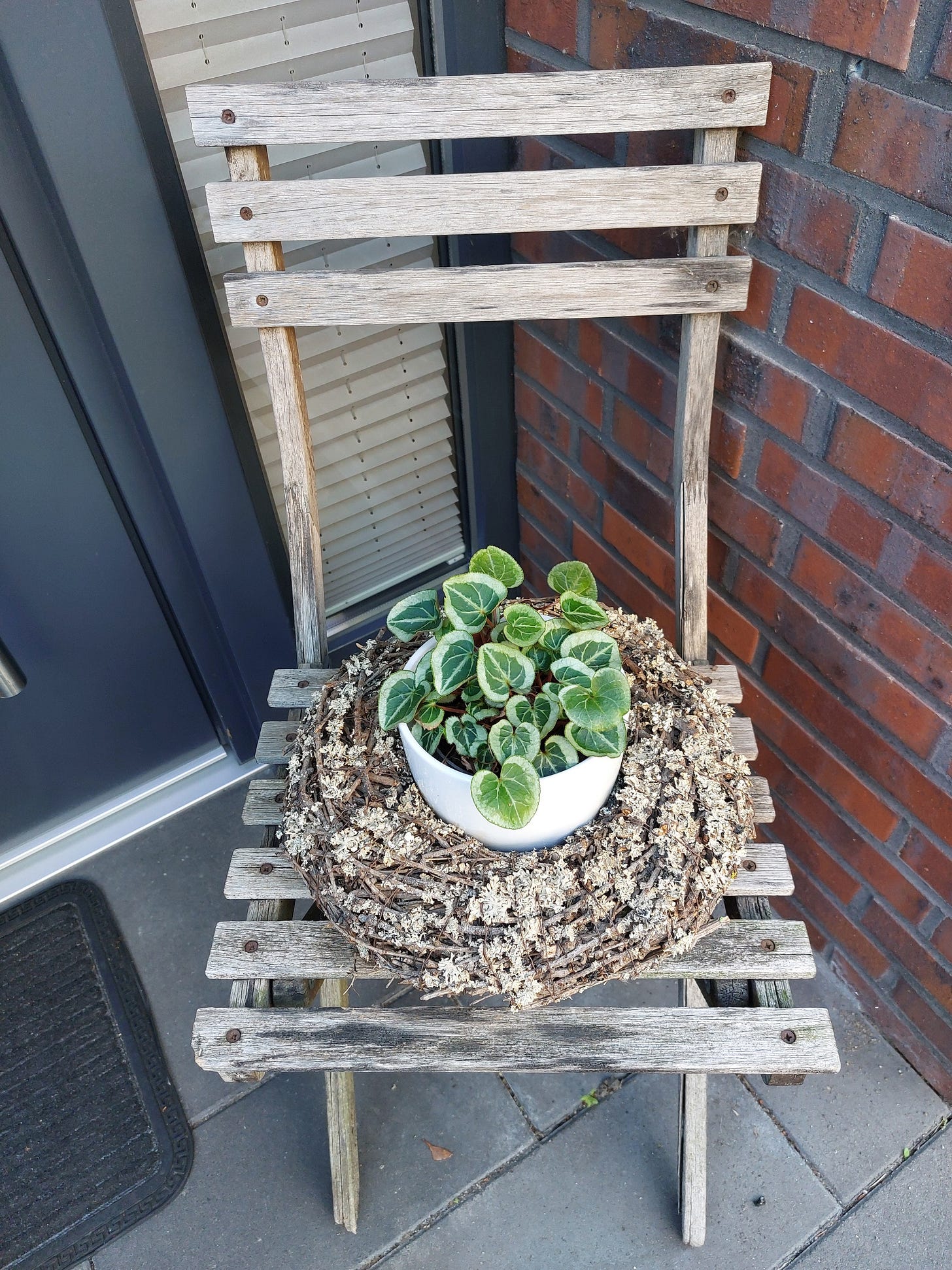
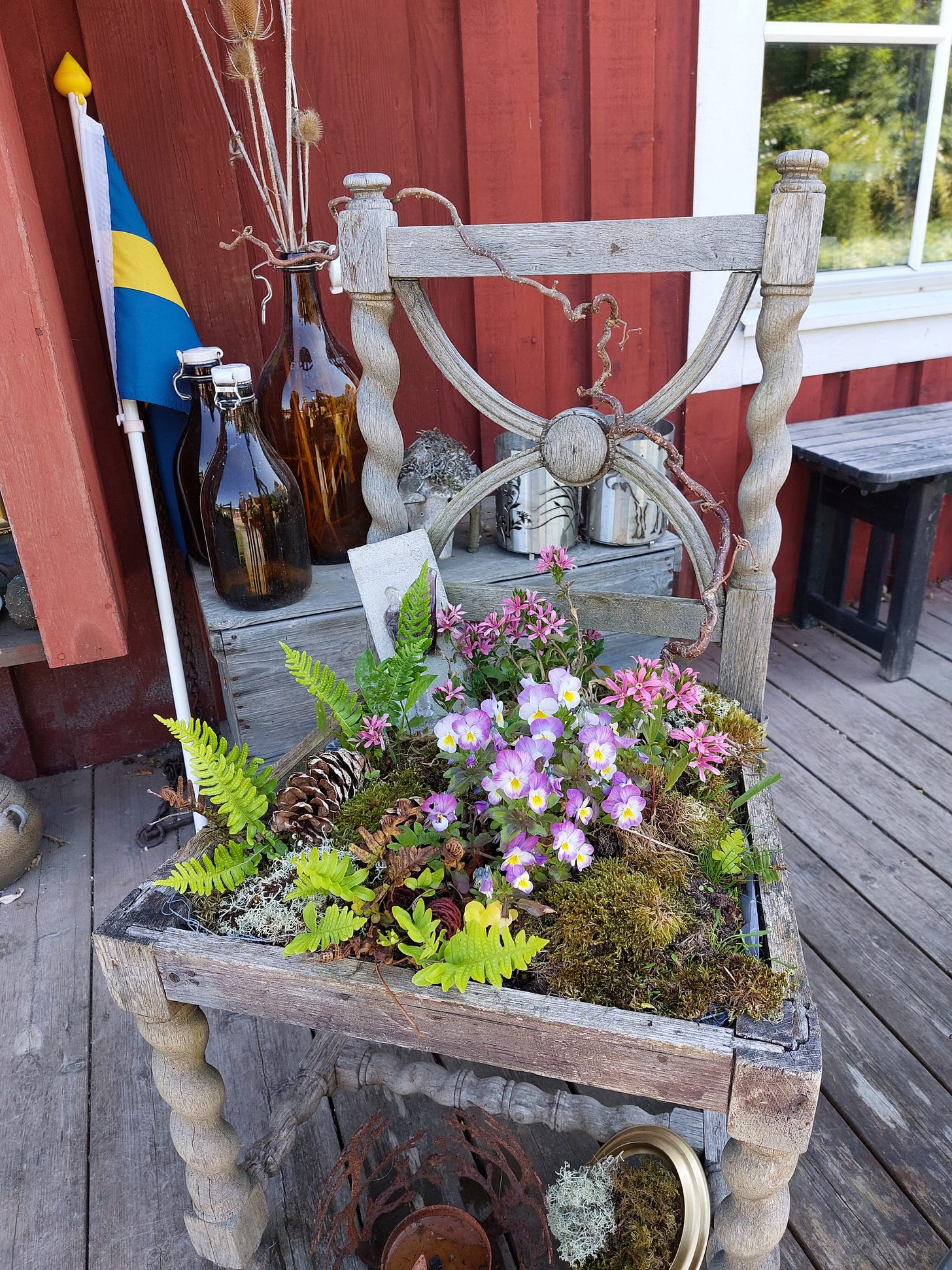
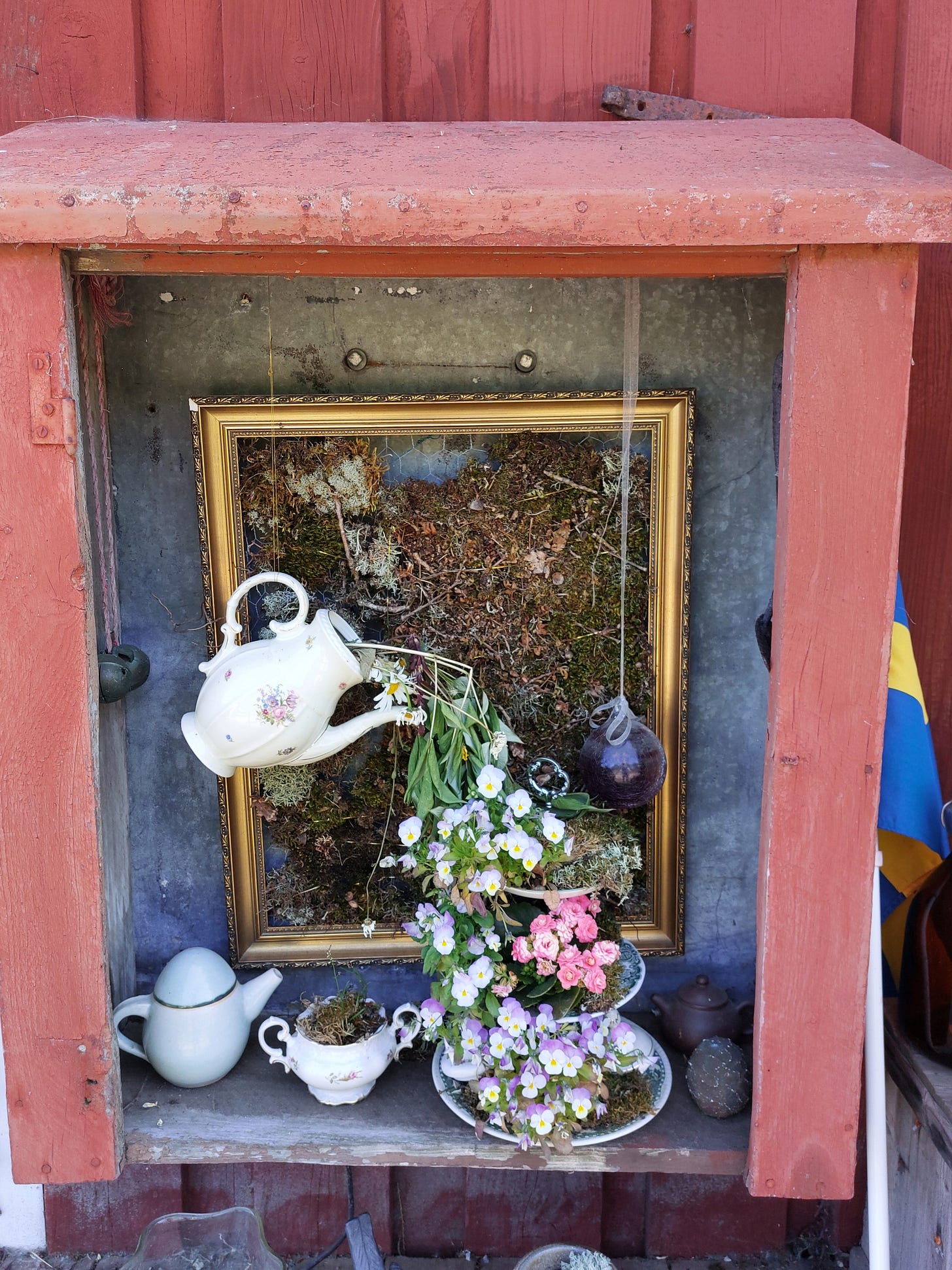

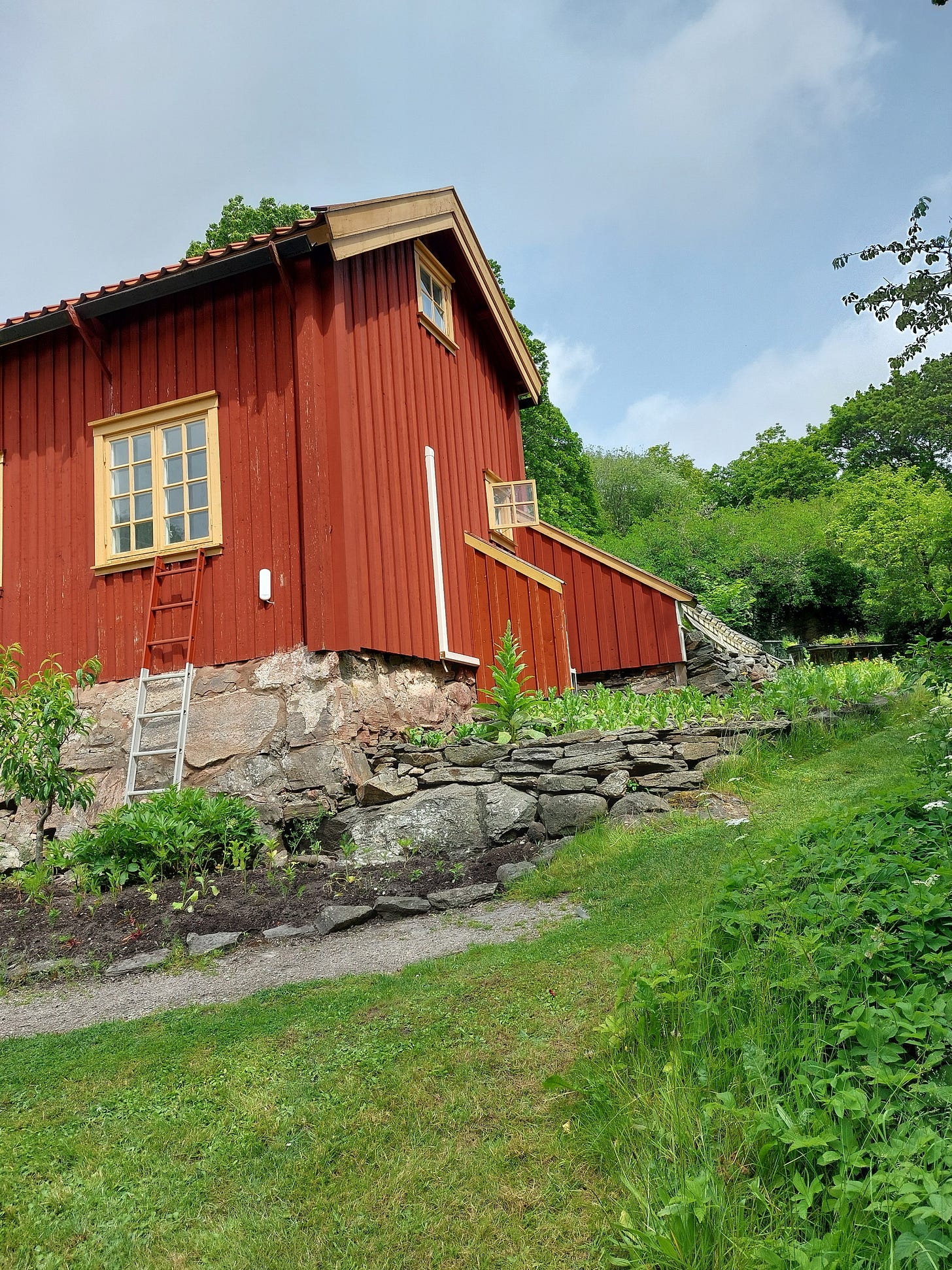
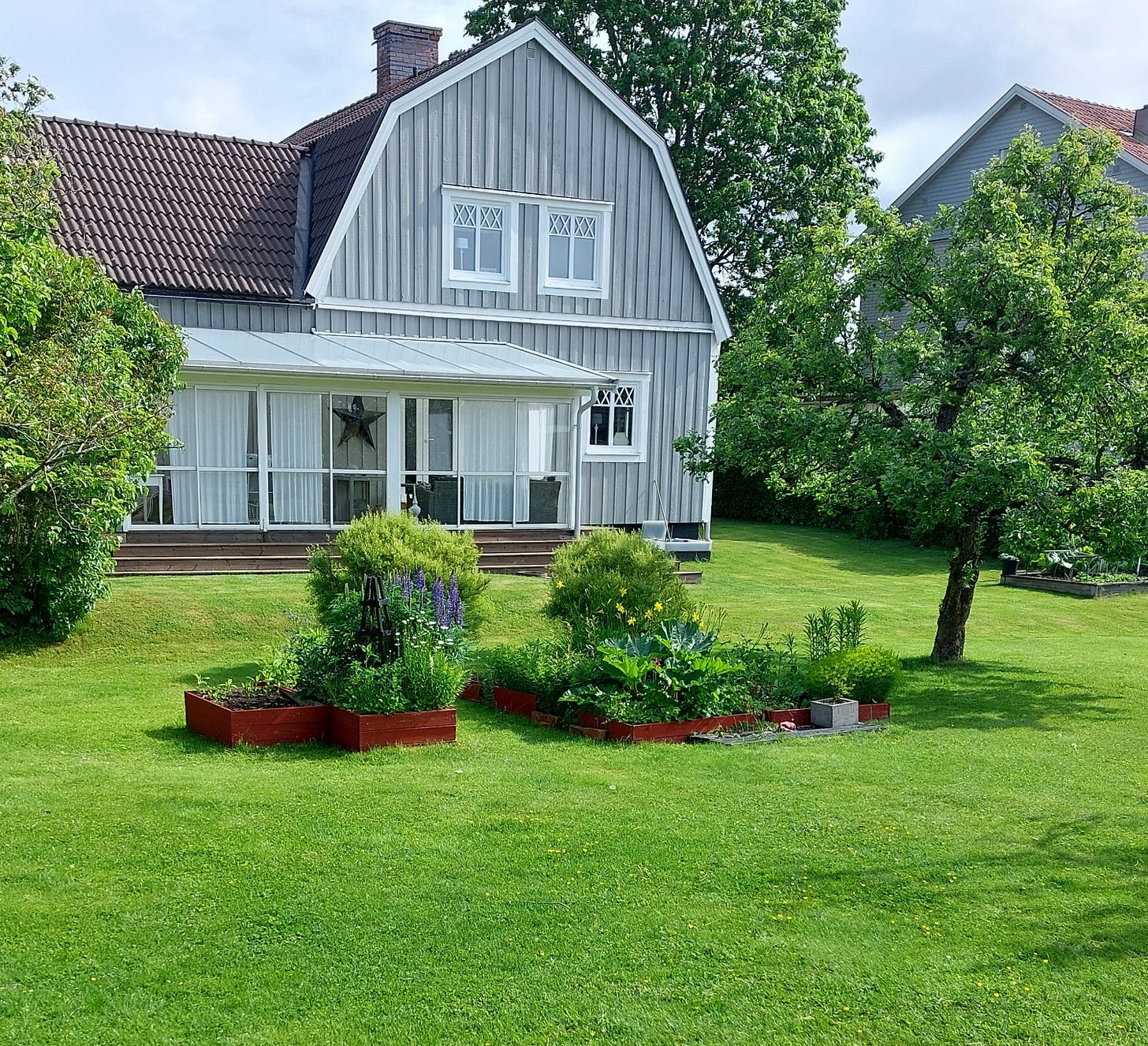
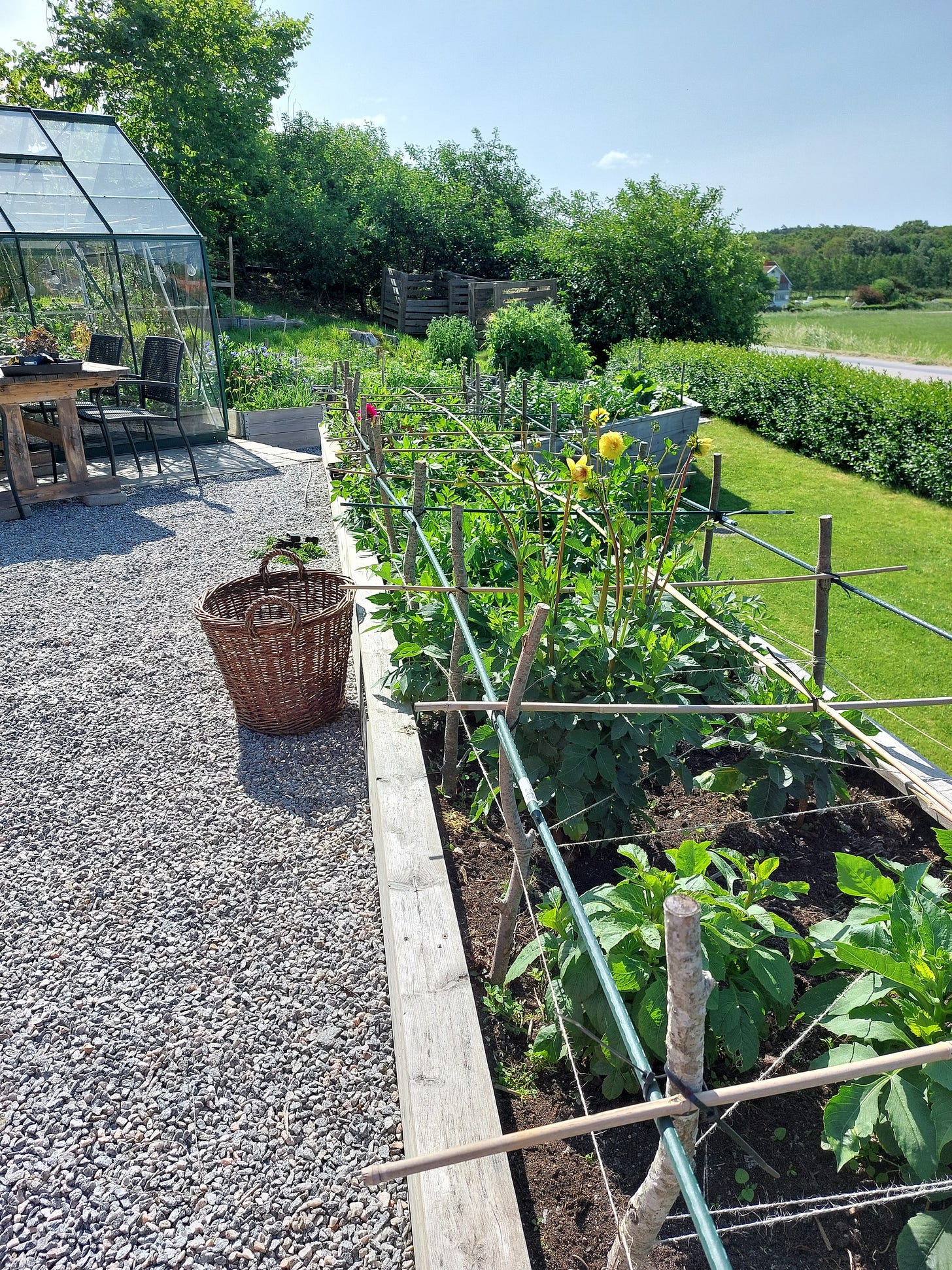
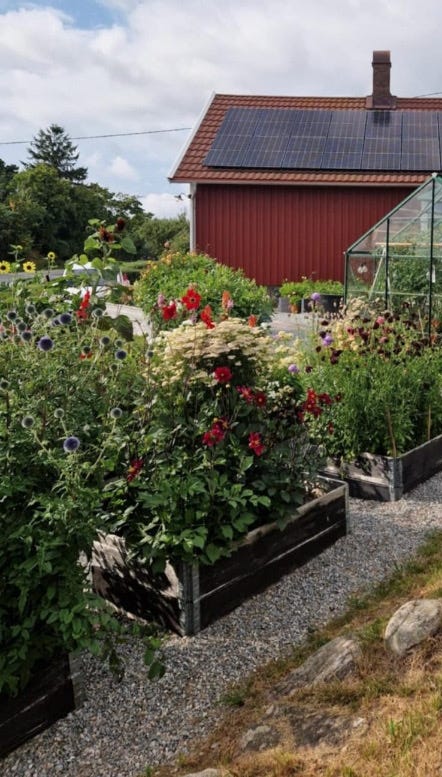
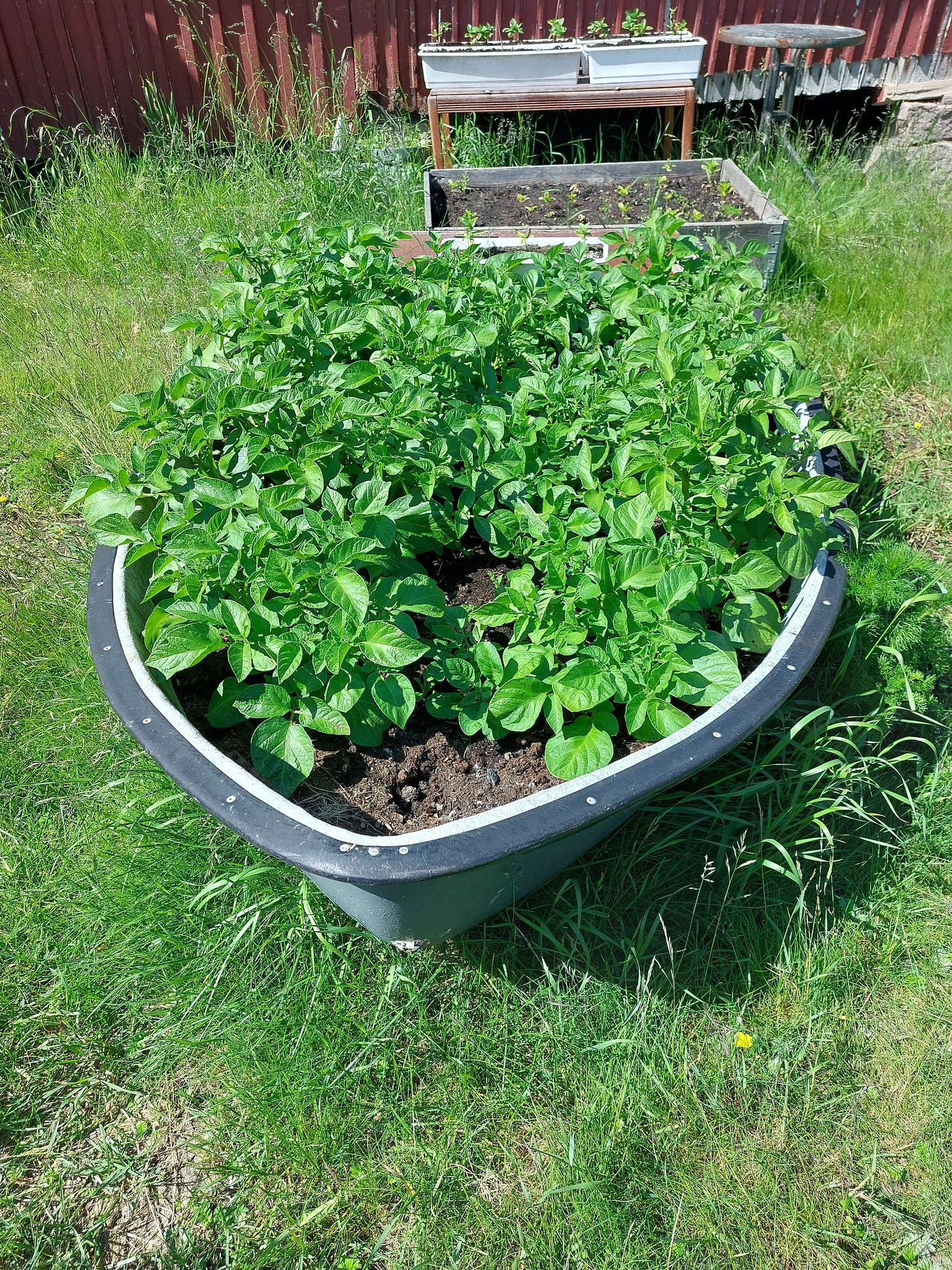

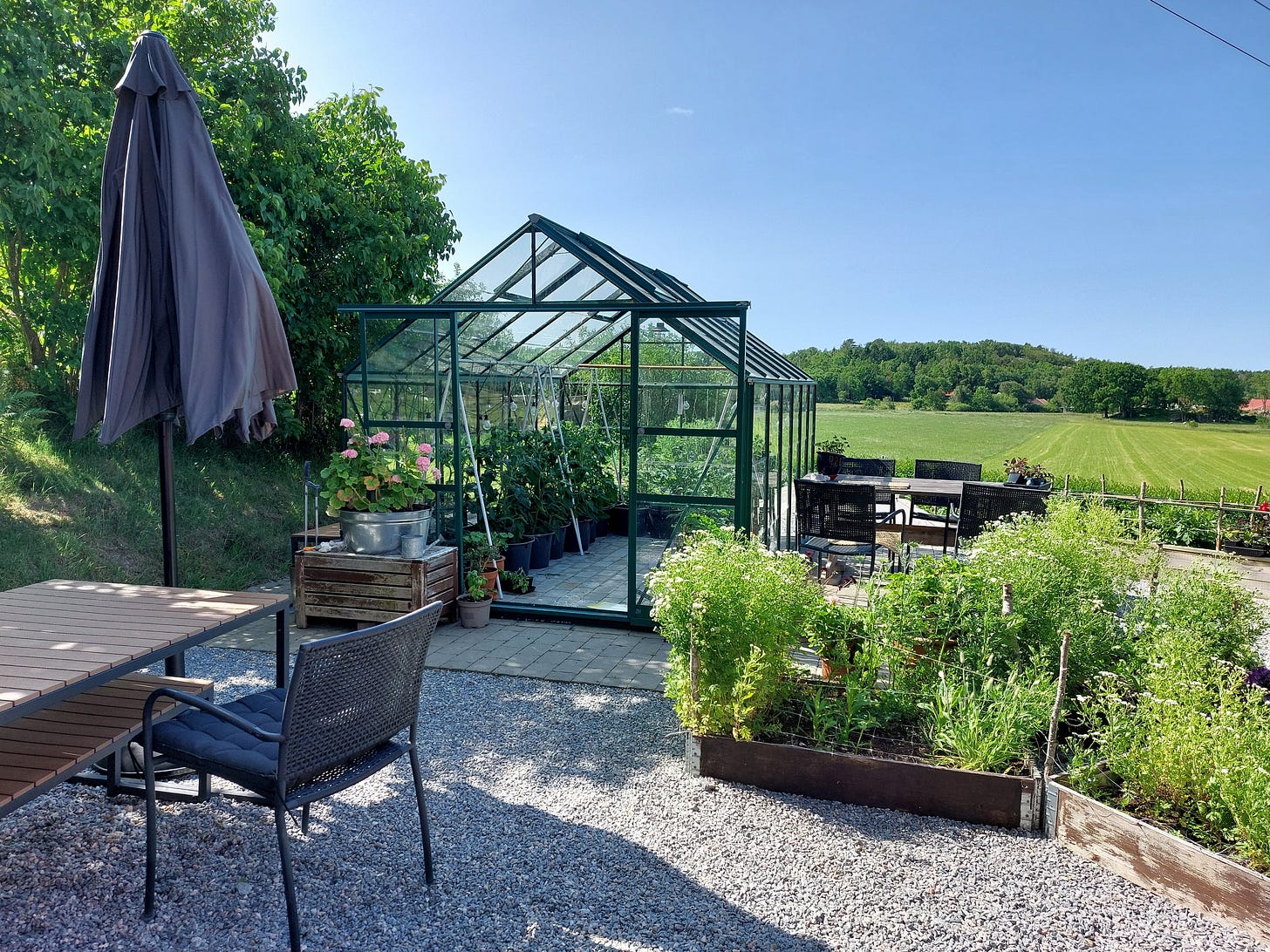

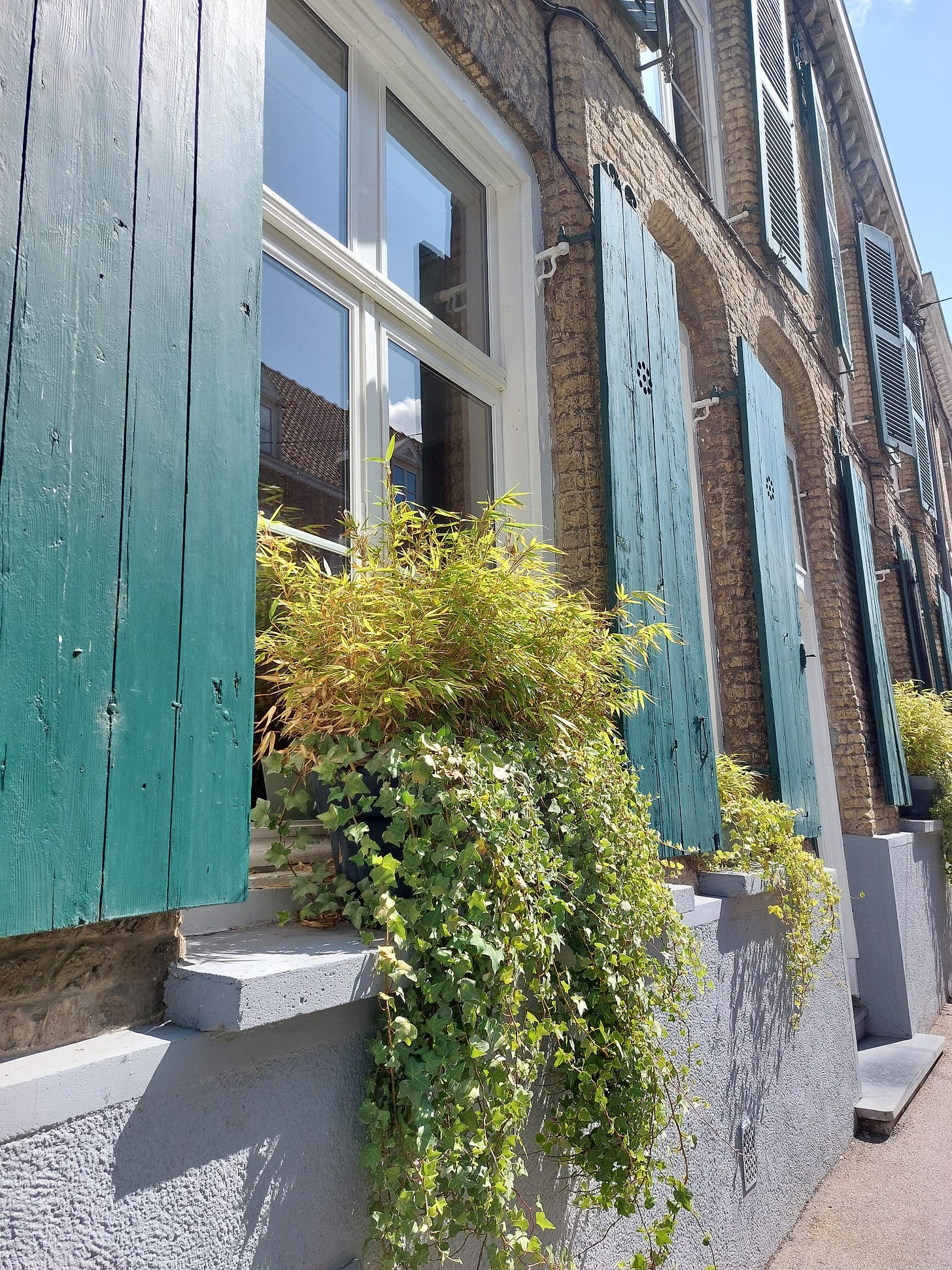
Some brilliant ideas there Linda
Lovely article with lots of garden styling ideas. Scandinavia is where it's at 😉